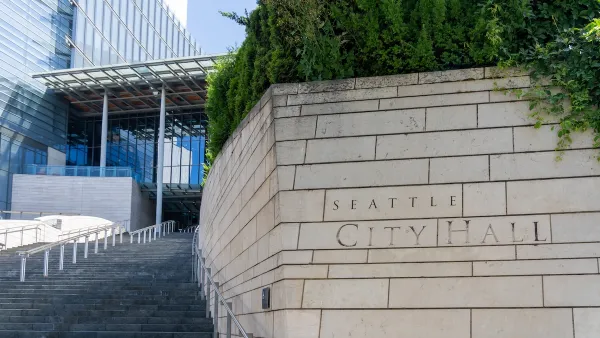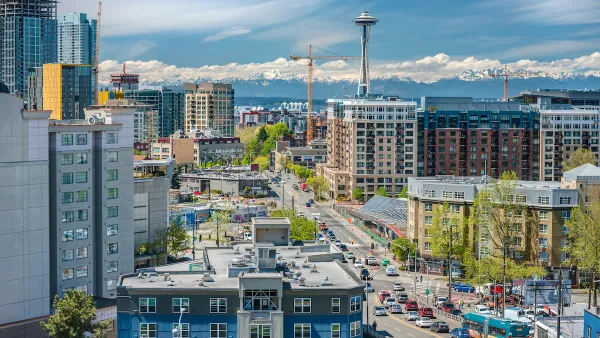Developers in Seattle have been building ultra-compact apartments to provide alternatives to high housing prices. But these "aPodments," which take advantage of loopholes in codes, could bring negative consequences with the large increase in density.
In the Emerald City, dozens of microhousing units are being built on what were once single-family lots. This increasingly common kind of housing "offers a way to reconcile rising urban housing prices with a financially struggling generation's preference for city living," says Claire Thompson, and "is now prompting passionate debate over the best approach to urban landfill." Such developments are a creative way of building affordable housing, but face opposition from "wealthy homeowners who don't want younger, poorer folks flooding their neighborhood, competing for parking spaces, blocking their views, destroying local character, and depreciating neighboring property values."
Another problem, says critics, "is not the idea of density itself or the types of new neighbors it could bring, but the backhanded way Seattle developers have gone about capitalizing on the trend." San Francisco has updated its city code to allow small units and New York is piloting "micro-apartment" projects, but Seattle is allowing developers to count multiple microapartments as one large unit and bypass standard design and environmental reviews. "If aPodments start showing up on every block," said Carl Winter, a representative of neighborhood group Reasonable Density Seattle, "that's an incredible increase in density, and they're never going to study what that density would do."
The Capitol Hill Community Council submitted a resolution to the Seattle City Council asking for a moratorium on new microapartments until the design-review loophole is closed, says Thompson, but it doesn't sound like the city is seriously considering it. "We're observing them and intend to do a little more study," said Mike Podowski, land use policy manager for the city's Department of Planning and Development.
FULL STORY: Peace in a pod: How tiny apartments could reshape the big city

Analysis: Cybertruck Fatality Rate Far Exceeds That of Ford Pinto
The Tesla Cybertruck was recalled seven times last year.

National Parks Layoffs Will Cause Communities to Lose Billions
Thousands of essential park workers were laid off this week, just before the busy spring break season.

Retro-silient?: America’s First “Eco-burb,” The Woodlands Turns 50
A master-planned community north of Houston offers lessons on green infrastructure and resilient design, but falls short of its founder’s lofty affordability and walkability goals.

Test News Post 1
This is a summary

Analysis: Cybertruck Fatality Rate Far Exceeds That of Ford Pinto
The Tesla Cybertruck was recalled seven times last year.

Test News Headline 46
Test for the image on the front page.
Urban Design for Planners 1: Software Tools
This six-course series explores essential urban design concepts using open source software and equips planners with the tools they need to participate fully in the urban design process.
Planning for Universal Design
Learn the tools for implementing Universal Design in planning regulations.
EMC Planning Group, Inc.
Planetizen
Planetizen
Mpact (formerly Rail~Volution)
Great Falls Development Authority, Inc.
HUDs Office of Policy Development and Research
NYU Wagner Graduate School of Public Service




























